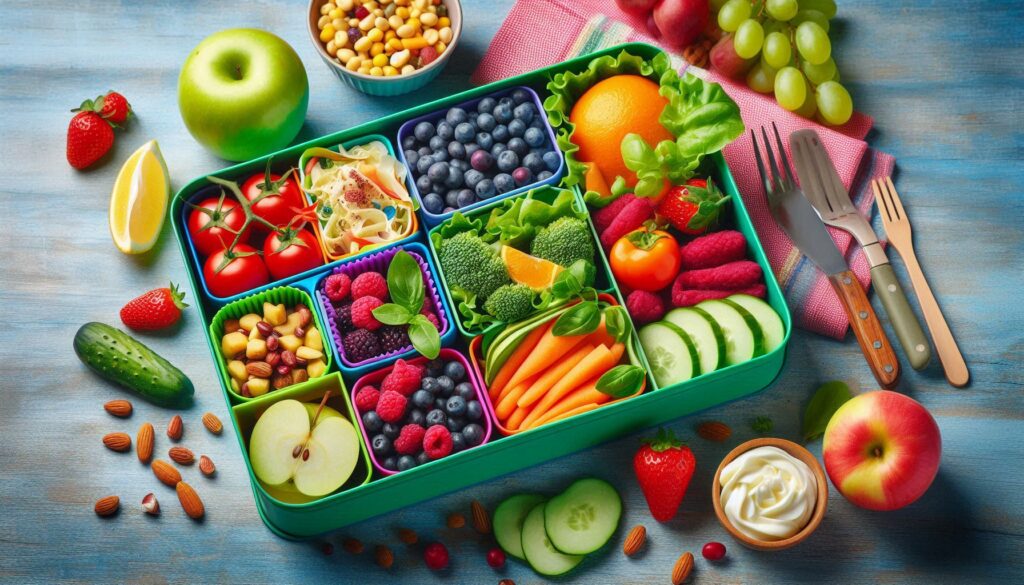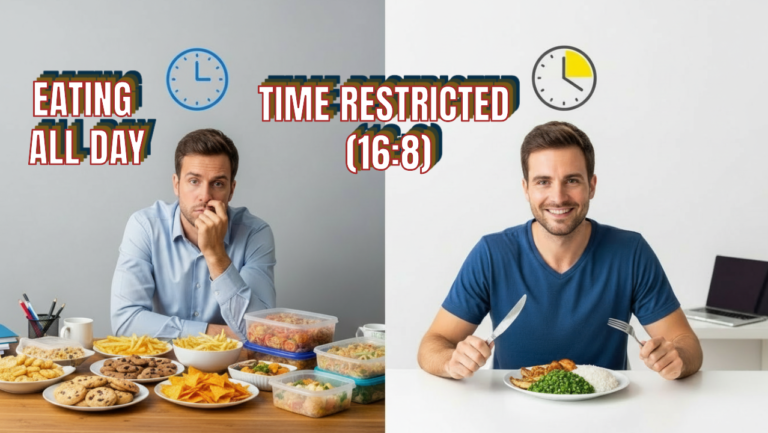
Article 13 of our Series “Nourishing Your Whole Self: The SaziBox Health Guide to Holistic Nutrition”
Welcome back to the SaziBox Health holistic nutrition series! Today, we embark on a crucial journey: fostering healthy eating habits in your children. As parents, we play a vital role in shaping our children’s relationship with food. From picky eaters to school lunches and childhood obesity concerns to navigating food allergies, this roadmap will equip you with the knowledge and tools to create a positive and nourishing food environment for your little ones, ensuring they embrace healthy eating for kids from an early age.
1. Navigating the Picky Eater Phase

Picky eating is a common challenge for many parents. While it can be frustrating, remember it’s often a temporary phase in a child’s development. Here are some tips to help encourage healthy eating for kids, even the pickiest ones:
- Patience & Persistence: Offer new foods repeatedly, even if initially rejected. It can take multiple exposures for a child to accept a new taste.
- Positive Reinforcement: Praise your child for trying new foods, even if they only take a small bite.
- Involvement: Involve your child in meal planning and preparation. This can spark curiosity and excitement about food, making healthy eating for kids more enjoyable.
- Role Modeling: Children learn by observing. Make healthy choices and eat various foods to set a good example.
- Fun & Creativity: Make meals visually appealing and fun! Use cookie cutters to shape fruits and vegetables, or create colorful smoothies together, making kids’ healthy eating an adventure.
Interactive Tip: Start a “Food Adventure Journal” with your child, where they can record new foods they’ve tried and rate them with fun stickers or drawings.
2. Packing Power-Packed School Lunches

School lunches are an important part of healthy eating for kids. They provide an opportunity to nourish your child’s body and mind throughout the day.
- Focus on Balance: Include a mix of protein, complex carbohydrates, healthy fats, and fruits & vegetables.
- Protein Power: Opt for lean protein sources like chicken, turkey, hard-boiled eggs, or yoghurt.
- Whole Grains: Choose whole-wheat bread, tortillas, or crackers over refined options.
- Fruits & Veggies: Pack colourful fruits and vegetables for essential vitamins and minerals.
- Healthy Fats: Include a small serving of nuts, seeds, or avocado for sustained energy.
Tip: Involve your child in the lunch-packing process. Let them choose their favourite fruits and vegetables or help assemble their sandwiches, encouraging their participation in healthy eating for kids.
Read more
Interactive Element:
- Lunchbox Idea Generator: Create a fun online tool where kids can mix and match different food groups to create healthy lunch combinations.
3. Preventing Childhood Obesity: Healthy Eating for Kids

Childhood obesity is a growing concern, but it’s preventable through healthy lifestyle habits. Healthy eating for kids is crucial for their physical and mental development.
- Focus on Whole Foods: Prioritize fruits, vegetables, whole grains, and lean proteins in your child’s diet.
- Limit Processed Foods: Minimize sugary drinks, packaged snacks, and fast food.
- Encourage Physical Activity: Aim for at least 60 minutes of moderate-to-vigorous physical activity per day.
- Create a Positive Food Environment: Make healthy options readily available and avoid using food as a reward or punishment.
Tip: Family meals are a great opportunity to connect and model healthy eating habits for kids. Turn off screens and focus on enjoying the food and each other’s company.
Interactive Prompt:
- Family Meal Challenge: Commit to having at least three family meals together each week. What are your favourite healthy recipes to share?
4. Navigating Food Allergies

Food allergies can be a serious concern, impacting your child’s ability to enjoy certain foods.
- Awareness: Be aware of common allergens like peanuts, tree nuts, milk, eggs, wheat, soy, fish, and shellfish.
- Read Labels: Carefully read food labels to identify potential allergens.
- Communication: Communicate with your child’s school, caregivers, and friends about their allergies.
- Emergency Plan: Have an emergency plan in place in case of an allergic reaction.
Tip: Empower your child to advocate for themselves by teaching them about their allergies and how to avoid triggers.
Nurturing a Lifelong Love of Healthy Food
By implementing these tips and strategies, you can lay the foundation for a lifetime of healthy eating for kids. Remember, it’s a journey, not a destination. Focus on progress, not perfection, and celebrate every small step.
- Share your experiences and tips for raising healthy eaters in the comments below!
- Subscribe to our newsletter for more holistic nutrition guidance and family-friendly recipes.
Together, let’s create a generation of happy, healthy eaters!





I love your blog.. very nice colors & theme. Did you create this website yourself? Plz reply back as I’m looking to create my own blog and would like to know wheere u got this from. thanks
Thank you so much! I’m glad you like the colors and theme of my blog. 😊 Yes, I did create the website myself. If you’re looking to start your own blog, I recommend checking out tools like Microsoft design for free for generating beautiful color palettes and [Canva](https://www.canva.com/learn/website-color-schemes/) for design inspiration and templates
Feel free to ask if you need any more tips or guidance on setting up your blog!